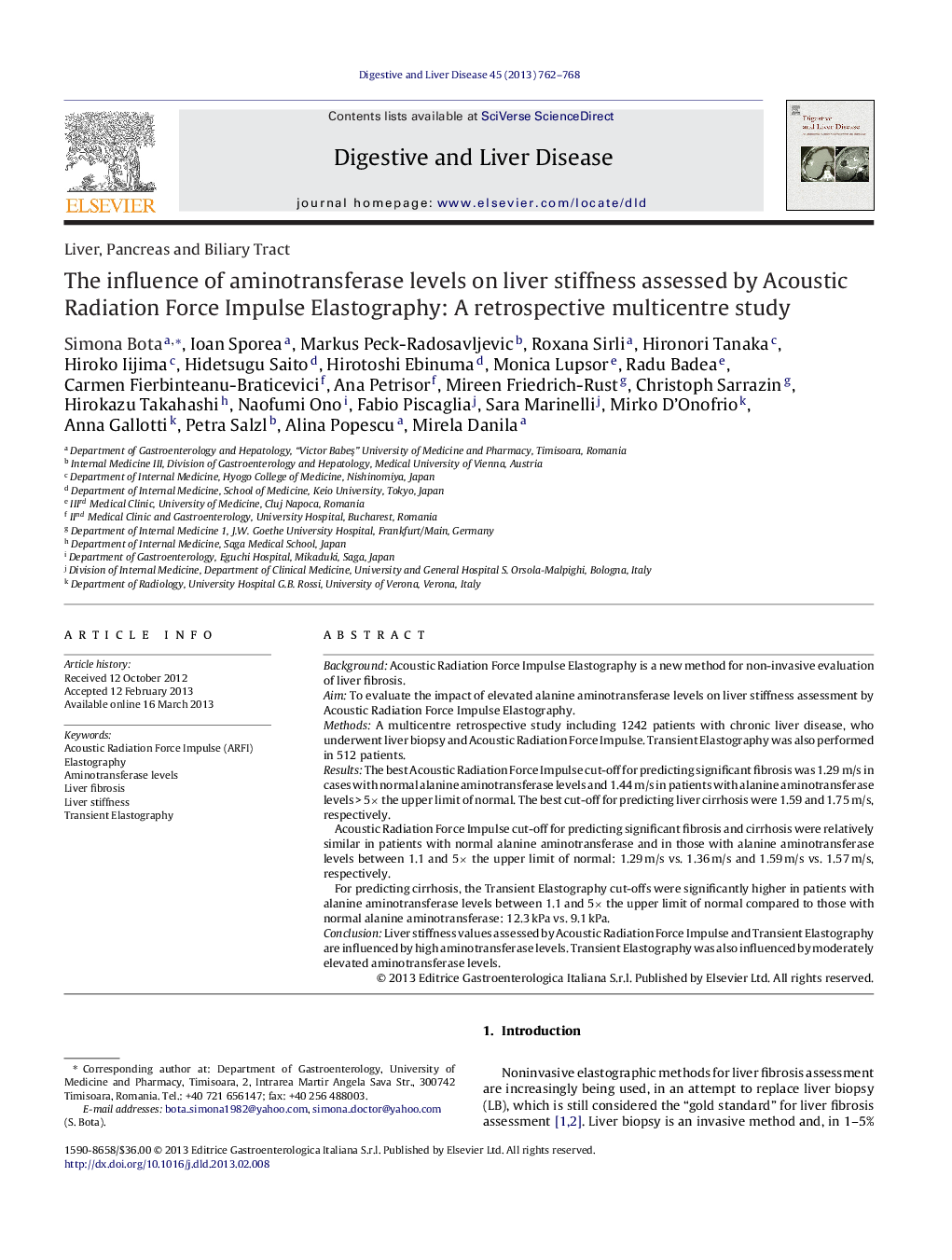| Article ID | Journal | Published Year | Pages | File Type |
|---|---|---|---|---|
| 6088764 | Digestive and Liver Disease | 2013 | 7 Pages |
BackgroundAcoustic Radiation Force Impulse Elastography is a new method for non-invasive evaluation of liver fibrosis.AimTo evaluate the impact of elevated alanine aminotransferase levels on liver stiffness assessment by Acoustic Radiation Force Impulse Elastography.MethodsA multicentre retrospective study including 1242 patients with chronic liver disease, who underwent liver biopsy and Acoustic Radiation Force Impulse. Transient Elastography was also performed in 512 patients.ResultsThe best Acoustic Radiation Force Impulse cut-off for predicting significant fibrosis was 1.29 m/s in cases with normal alanine aminotransferase levels and 1.44 m/s in patients with alanine aminotransferase levels > 5à the upper limit of normal. The best cut-off for predicting liver cirrhosis were 1.59 and 1.75 m/s, respectively.Acoustic Radiation Force Impulse cut-off for predicting significant fibrosis and cirrhosis were relatively similar in patients with normal alanine aminotransferase and in those with alanine aminotransferase levels between 1.1 and 5à the upper limit of normal: 1.29 m/s vs. 1.36 m/s and 1.59 m/s vs. 1.57 m/s, respectively.For predicting cirrhosis, the Transient Elastography cut-offs were significantly higher in patients with alanine aminotransferase levels between 1.1 and 5à the upper limit of normal compared to those with normal alanine aminotransferase: 12.3 kPa vs. 9.1 kPa.ConclusionLiver stiffness values assessed by Acoustic Radiation Force Impulse and Transient Elastography are influenced by high aminotransferase levels. Transient Elastography was also influenced by moderately elevated aminotransferase levels.
